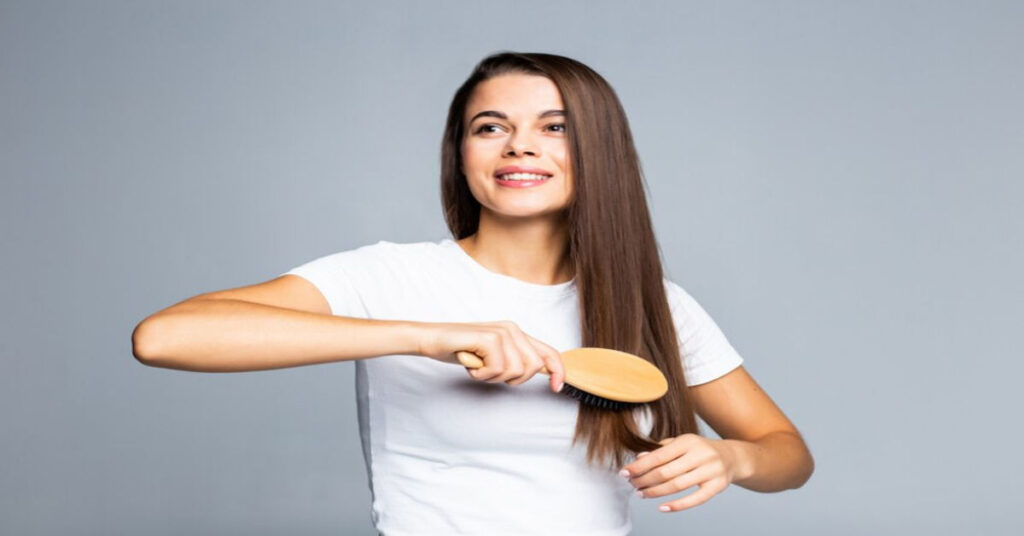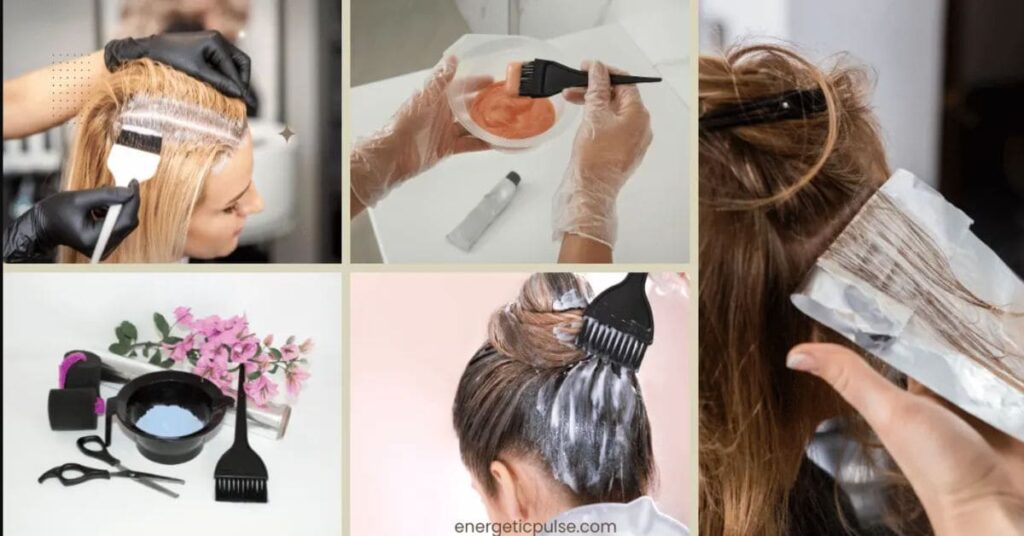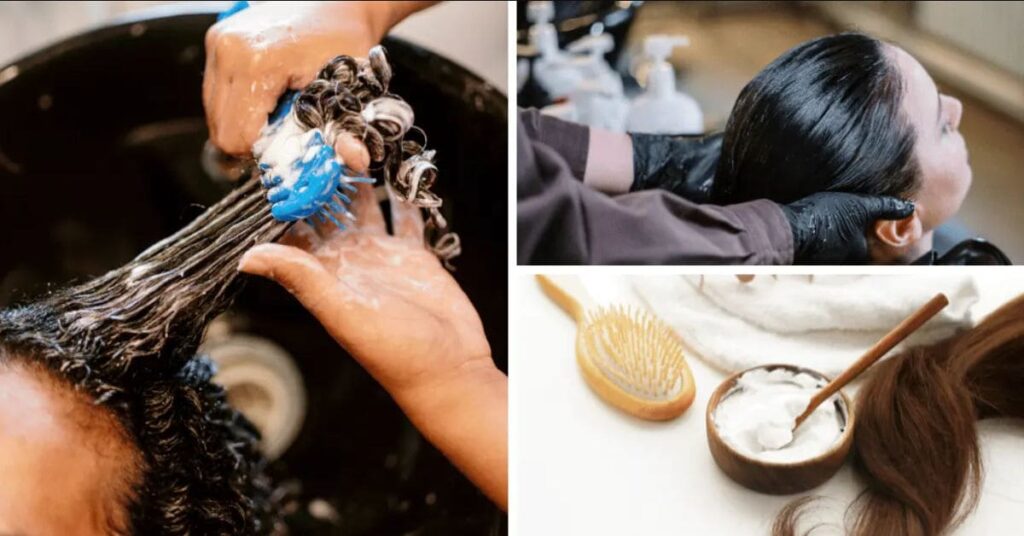The type, texture, and style of your hair determine how often you should brush it. It is generally advised to brush your hair lightly, at least once a day, in order to stimulate the scalp, disperse natural oils, and get rid of tangles. However excessive brushing can cause breakage, particularly in people with curly or delicate hair. While brushing after washing may be preferred by some to help detangle
and style, brushing before washing might help disperse oils more equally among certain hair types. In the end, pay attention to what your hair requires and modify your brushing schedule accordingly.
The Benefits of Hair Brushing
Hair brushing is important for your hair’s general health and appearance; it’s not simply for detangling and style. Here are a few of the main advantages:
A. Better Health of the Scalp:
B. Enhanced blood circulation:
Brushing increases blood flow to the scalp, which fortifies and encourages the growth of hair follicles. Enhancing circulation additionally guarantees superior nutrition uptake by the hair roots.
C. Detoxification:
By cleaning the scalp and hair of dust, debris, and product buildup, brushing helps to avoid clogged pores and possible infections. Additionally, it aids in clearing the air of impurities that may make hair appear dull.
D. Increased shine and volume:
Natural oils are evenly distributed throughout the hair shaft by brushing, giving the hair a shiny, lustrous appearance. Additionally, it aids in lifting the roots, giving the hair bounce and volume.
E. Stress Relief:
Brushing your hair gently can be a calming and relaxing motion that eases tension and stress on your scalp while enhancing your overall well-being.
F. Better Texture:
Brushing your hair on a regular basis helps to smooth the cuticle, which reduces frizz and leaves your hair softer and easier to manage. Additionally, it increases the efficacy of hair masks and conditioning treatments by aiding in their diffusion.
G. Style Maintenance:
By distributing styling ingredients uniformly throughout the hair, brushing contributes to the long-lasting and uniform hold of the hairdo.
How Often Should You Brush Your Hair
A. Hair Type:
- The best time to brush your hair depends on a number of variables, such as your lifestyle and personal preferences, as well as the kind, length, and texture of your hair. This is a thorough analysis of the recommended frequency of hair brushing:
- Curly or textured hair is more delicate and prone to breakage, so it’s essential to handle it with care. Avoid over-brushing, as this can disrupt the natural curl pattern and cause frizz. Instead, gently detangle with fingers or a wide-tooth comb and limit brushing to once or twice a week.
B. Length of Hair:
- Short Hair: Short hair may not need to be brushed every day and usually requires less upkeep. Brushing can still help stimulate the scalp and disperse oils, though. For short hair, brushing every other day or as needed is sufficient.
- Regular brushing helps prevent knots and tangles and transfers natural oils from the scalp to the ends of medium-to-long hair. To maintain manageable, smooth, medium-to-long hair, try brushing once or twice a day.
Aspects of Lifestyle:
Activity Level:
People who work out frequently or play outdoor sports may need to brush their hair more frequently to remove dirt and perspiration.
Environmental factors:
Humidity, pollution, and exposure to inclement weather can all have an effect on how clean and healthy your hair is. Reduce the frequency of brushing to maintain the health of your hair.
D. Overall Recommendations:
- Although the optimal frequency for brushing your hair varies depending on your hair type, a good general rule of thumb is to brush sparingly and whenever necessary to maintain the healthiest possible appearance and feel.
- Observe how brushing affects your hair and modify your regimen as necessary. Reduce the amount of time you spend brushing your hair and concentrate on gentle detangling if it starts to get dry or brittle.
- Keep in mind that when it comes to combing your hair, quality counts more than quantity. To prevent breakage and damage, always brush with care and use a high-quality brush that is suitable for your hair type and texture.
Steps for Brushing Wet Hair
Extra caution and attention are needed while brushing damp hair to avoid breakage and damage. Here are some guidelines for properly brushing wet hair:
A. Getting ready:
- Employ a Broad-Tooth Comb:
Start by carefully removing knots and tangles from wet hair with a wide-tooth comb or a specialist detangling brush. When detangling, these instruments are made to break and harm as little as possible.
- Apply a conditioner that stays in:
Before brushing, moisten hair and apply a leave-in conditioner or detangling spray for extra slip and moisture. This will facilitate detangling by lubricating the hair strands.
B. Technique:
- Start at the Ends: As you brush the hair, start at the ends and work your way up to the roots. By doing this, breakage is reduced because the hair shaft isn’t pulled or stretched.
- Brush Wet Hair Gently and Smoothly: To prevent friction and damage, brush wet hair gently and smoothly. Wet hair is more prone to breaking, so try not to yank or pull on it.
- Divide and Conquer: To guarantee complete detangling and less stress on the hair, divide your long or thick hair into pieces and brush each one separately.
c.Limit Brushing Time:
- Brushing damp hair for an extended period of time should be avoided as this might weaken the hair shaft and cause it to break. When the hair is smooth and free of knots, cease trying to disentangle it as quickly as possible.
- Be Patient: When brushing damp hair, especially if it tends to tangle easily, take your time and exercise patience. Hastily completing the process may cause more breaking and damage.
Selecting the Ideal Hair Brush
Selecting the proper hair brush is crucial to getting the look you want and preserving the health and integrity of your hair. Here’s a thorough explanation of the various kinds of hair brushes and how to choose the ideal one for your requirements:
A paddle brush works well with all hair types, but it works best with thick or long hair.
Benefits:
Paddle brushes are great for detangling and smoothing big areas of hair because of their wide, flat surface and tightly packed bristles.
Usage:
To create sleek styles, smooth frizz out, and gently detangle wet or dry hair, use a paddle brush.
B. Boar Bristle Brush: Ideal for:
Textures ranging from straight to wavy, and fine to medium hair.
Benefits:
Natural boar hair, used to make boar bristle brushes, helps to transfer natural oils from the scalp along the hair shaft, giving hair a glossy, healthy appearance.
Usage:
To give extra shine to your hair, use a boar bristle brush to disperse oils, stimulate the scalp, and smooth the cuticle of your hair.
C. Round Brush:
Ideal for: giving all hair types volume, curls, and waves.
Benefits:
Round brushes are great for styling and adding volume at the roots because of their cylindrical barrels with bristles surrounding them.
Usage:
For voluminous blowouts, curls, or waves, use a round brush and a hair dryer. Select a barrel size that goes with the haircut you want.
D. Detangling Brush:
Ideal for: Hair that is textured, thick, curly, or prone to tangling.
Advantages:
The flexible bristles of detangling brushes are made to gently untangle tangles and snags without shattering or harming objects.
Usage:
To remove knots and tangles gently and without pushing or tugging, use a detangling brush on wet or dry hair.
E. Wide-Tooth Comb:
Ideal for: any type of hair, but curly or textured hair in particular.
Advantages:
The widely spread teeth of wide-tooth combs help untangle hair without breaking it or changing its natural curl patterns.
Usage:
To properly distribute products and untangle hair, use a wide-tooth comb on either wet or dry hair.
F. Styling Brush:
Ideal for: Giving all hair types glossy, silky looks.
Benefits:
There are many different sizes and forms of styling brushes available, such as vented brushes, sculpting brushes, and teasing brushes, each of which is intended for a certain style approach.
Use:
Select a styling brush according to the type of hairstyle you want—straight and sleek or voluminous and textured.
G. Choosing the Right Brush:
Think About Your Hair Kind: When choosing a brush, consider your hair kind, texture, length, and preferred styles.
Trial and error:
Try out a variety of brushes to see which one suits your hair the best. Don’t be scared to do this. It’s possible that what suits one individual won’t suit another.
Invest in Quality:
To guarantee lifetime and optimum performance, spend money on high-quality brushes constructed of sturdy materials.
Continual Upkeep:
To keep your brushes hygienic and functional, clean them on a regular basis to get rid of bacteria, product buildup, and hair.


